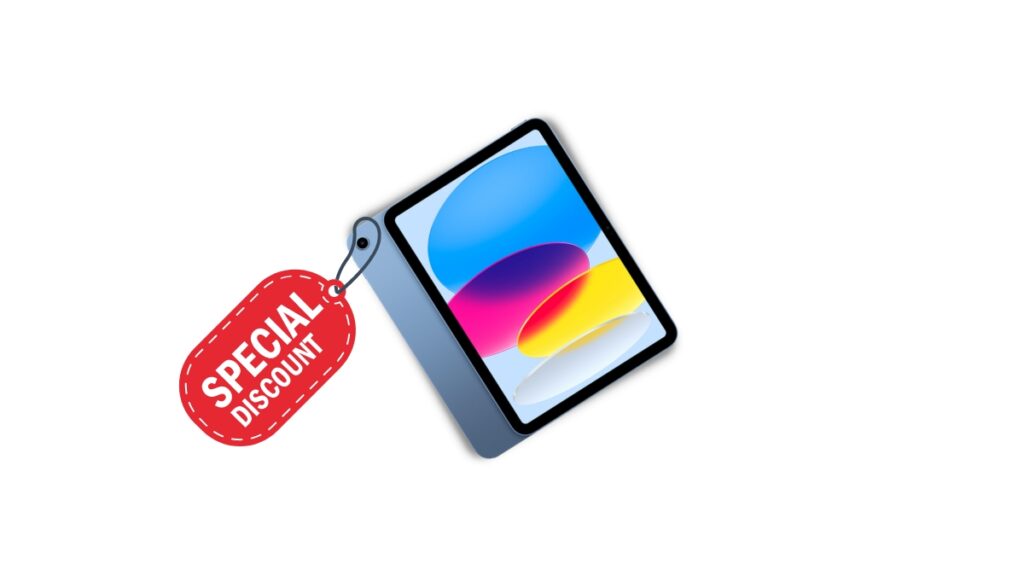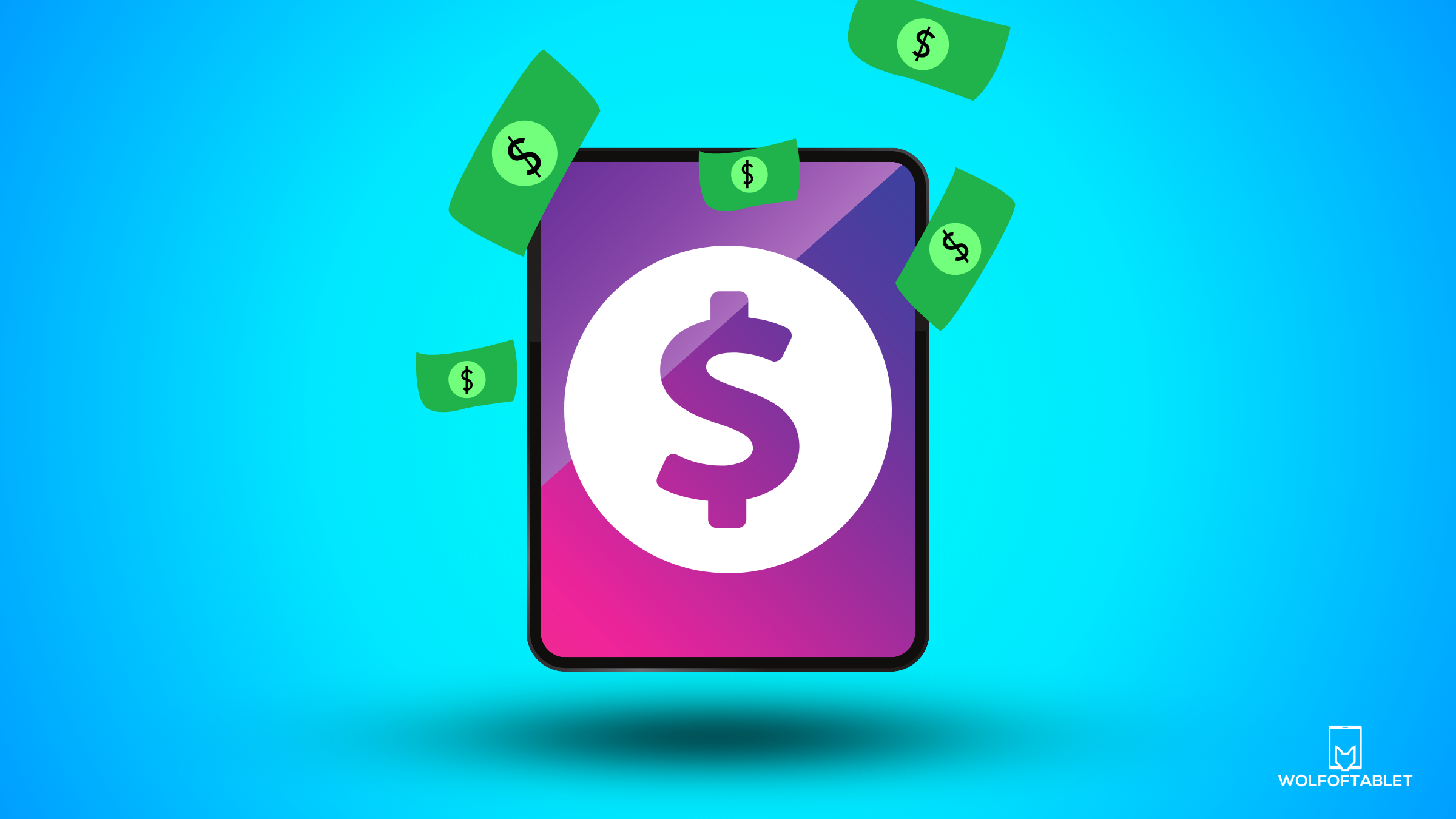The newest iPads range anywhere from $449 to $2399. The cheapest iPad is the classic one, and the most expensive one is the iPad Pro 12.9 inch with 2TB storage and Cellular Connectivity. If you add accessories, it’s close to $3000.
iPads are expensive, but what isn’t worth buying these days? There’s always an option to buy a refurbished iPad.
In this article, I will cover all iPad prices, explain why iPads are so expensive, why some iPads are cheaper than iPhones, why the iPad Mini is more expensive than the classic iPad, etc.
iPad Prices
There are four types of iPads: iPad, iPad Mini, iPad Air, and iPad Pro. They have different sizes, different specifications, and even different features.
| iPad Model: | Starting Price: | Highest Price: |
| iPad | $449 | $749 |
| iPad Mini | $499 | $799 |
| iPad Air | $599 | $899 |
| iPad Pro 11-inch | $799 | $2099 |
| iPad Pro 12.9-inch | $1099 | $2399 |
The pricing of iPads depends on two key factors: storage and RAM capacity, along with the choice between a WiFi-only model or a WiFi+LTE model.
Why iPads Are So Expensive?
There are multiple factors that make iPads as expensive as they are. Here are the key reasons why iPads are so expensive:
- Touch Screen Displays: Apple uses High-resolution Retina displays that are responsible for sharp colors and motion, making everything look smooth. It’s the most expensive part of iPads.
- Materials & Build Quality: Apple uses aluminum and glass construction in iPads. Which increases durability and improves aesthetics.
- Processors: Apple has started to manufacture their own processor and it’s one of the most expensive parts in iPads.
- Software and Ecosystem: iPads have their own software called iPad OS. Which is similar to iOS but still different, adding to the overall cost.
- Innovation: Apple has to invest in research, development and innovation to keep up with the latest technologies and trends.
- Brand: Apple still invests heavily in brand recognition and reputation. Consumers are willing to pay a premium for products from a brand with a strong reputation. Buying ads ain’t cheap, and that adds to the overall price.
- Supply Chain and Manufacturing: Apple devices are often manufactured in countries with higher labor costs, which increases the overall costs.
iPads can get expensive, especially the premium models(iPad Pro) with highest storage and LTE, but that’s why Apple offers various iPad models at different price points.
Why is The iPad Pro More Expensive Than The iPad Air?
There are several reasons why iPad Pro models are more expensive than iPad Air. The key reasons are:
- iPad Pro has a more powerful processor, allowing users to work with high-demanding apps.
- iPad Pro has a ProMotion 120Hz display. These advancements in display technology contribute to the production of sharper, crisper images and more vibrant colors. Making them better choices for movies, videos, and artwork.
- iPad Pro has Face ID, while iPad Air only has Touch ID.
- iPad Pro has more storage and RAM.
- iPad Pro has better-quality cameras.
- iPad Pro has a bigger screen and body.
- iPad Pro has higher brightness (up to 1600 nits)
It’s important to mention that iPad Pro is intended more for professionals and users that require more processing power, while the iPad Air offers a balance of performance and value.
Why is The iPad Air More Expensive Than The iPad Mini?
iPad Air is more expensive than iPad Mini for several reasons:
- iPad Air has a bigger screen and body.
- iPad Air has a faster processor.
- iPad Air comes with more RAM.
- iPad Air has better-quality cameras.
Why is The iPad Mini More Expensive Than The iPad?
iPad Mini is more expensive than iPad for several reasons:
- iPad Mini is more compact, achieving a small form increases the overall price.
- iPad Mini has a laminated screen, just like the iPad Air and Pro, but the classic iPad has a non-laminated screen.
- iPad Mini has a more powerful processor.
- iPad Mini has better-quality cameras.
- iPad mini has a sharper display.
The iPad Mini is generally more compact and portable than the standard iPad. Achieving a smaller form factor with similar performance may involve additional engineering and design considerations,
Why is The iPad Cheaper Than The iPhone?
There are several reasons why iPhones are more expensive than iPads:
- iPhones have smaller and more compact designs, so putting premium features and hardware inside small devices is more costly.
- iPhones have faster and more capable processors.
- iPhones have better-quality cameras.
- iPhones have OLED displays.
- iPhones have Face ID.
- iPhones have LTE.
Do iPads Ever Go on Discount?

Yes, iPads do go on discount from time to time. Apple and various authorized retailers often offer promotions and discounts on iPads. However, these discounts are not nearly as impressive as Android discounts.
Occasionally, you can see an iPad go on Discount on Amazon and Best Buy.
Do iPads Go on Discount on Black Friday?
You won’t see a Black Friday discount on Apple’s website, but you might see a Black Friday offer on iPads from Apple’s authorized resellers like Amazon, Best Buy, Target, etc.
Do iPads Go on Discount on Christmas?
Apple’s website usually doesn’t offer Christmas discounts on iPads or other Apple products, but other retailers like Amazon, Best Buy, and Target do offer Christmas discounts for iPads.
iPad Student Discount
Apple offers discounts for students or educational pricing, as they call it. This discount applies to all Apple products—iPads, iPhones, MacBooks, AirPods, etc.
Apple offers a $50 discount on iPads for students. You can apply for this discount if you are 16 years old or older and you have enrolled in higher education(University, College). You will need to show your ID or upload it to the website. You have to be a newly accepted student.
iPad Teacher Discount
Apple offers teachers and staff members discounts. You can get a $50 discount on all iPads if you are a teacher or a staff member. You will need to verify this, so prepare the necessary documentation.
Best iPad Deals
So, what are the best cheap iPad deals at this moment? Right now, Amazon offers the best iPad deals.
- iPad 9th gen from $329 to $249 at Amazon.
- iPad 10th gen from $449 to $399 at Amazon.
- iPad Mini 6th gen from $499 to $431 at Amazon.
- iPad Air 5th gen from $599 to $459 at Amazon.
FAQ
Why older iPad models are still so expensive?
Apple does offer modest price reductions for older generation models, albeit not substantial ones. iPads, on average, receive support for up to 7 years, encompassing both software and security updates. This extended support period sustains a continued demand for these products, leading to a scenario where there isn’t a compelling need to significantly lower prices. Apple’s confidence in the quality and durability of their products, coupled with a strong brand appeal, means that consumers are often willing to pay a premium for these devices.
Related Articles:
Best Tablets Under $500
Reason To Buy an iPad (Use Cases For It)

I'm a writer and editor in iPads & Android Tablets, Windows Tablet section. I'm passionate about technology, especially about tablets. I'm on a mission to assist people in discovering their ideal tablets. In addition, I'm dedicated to producing helpful how-to guides and sharing top-notch tips and tricks. In my early carrier I founded and became and editor at worldoftablet and have been a guest author at many other tech blogs. In wolfoftablet I'm focusing on iPads, Tablets, Apple Pencil, Apps, Reviews, Buyers Guides and Tablet Accessories. In free time I like to play games on my PS5 or iOS.

